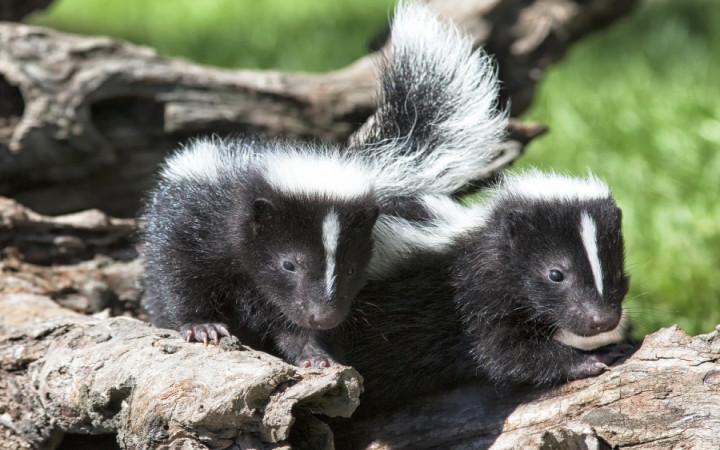Today’s Wonder of the Day was inspired by Annie. Annie Wonders, “Why do skunks smell bad?” Thanks for WONDERing with us, Annie!
Let’s start today’s Wonder of the Day with a joke. Ready? Here it is: Why did the skunk go to school?
Any ideas? We know . . . For show and SMELL! Ha!
Okay, that joke might stink, but so do skunks. Or, at least, they can make you stink if you get too close. They use a special spray to defend themselves from predators, such as wolves, foxes, and badgers. Skunks have also been known to spray humans and family pets who make them feel threatened.
When a skunk senses danger, it can raise its tail and release its stinky spray from the glands underneath. Skunks can accurately hit a target from about 10 feet away!
What makes a skunk’s spray stink? It’s made up of oily chemicals called thiols. These are sulphur compounds that can cause headaches and burning or stinging in the eyes. Many would argue that the worst part, though, is the smell.
If you’ve ever smelled skunk spray, you know how unpleasant it is. Some people have described the smell of a skunk’s spray as a combination of rotten eggs, garlic and burnt rubber. Phew!
It’s this horrible smell that sends the strong message to predators that says, “Stay away from me!” And in most cases, it works. Even large bears will avoid tiny skunks to keep from being sprayed. Unfortunately, one predator—the great horned owl—has a very poor sense of smell and is rarely deterred by a skunk’s spray. These owls are one of the few animals that regularly eat skunks.
Skunks do their best to conserve their spray and only use it if they truly feel threatened. If they run out, it can take up to 10 days to make more. Before spraying, a skunk will usually try other ways of scaring off a predator, including hissing, stomping its feet, and lifting its tail to simulate a spray attack.
Has your pet had a run-in with a skunk? That STINKS! But don’t fall back on old wives’ tales that tell you to give your pet a bath in tomato juice. Instead, use a solution of hydrogen peroxide, baking soda, and liquid soap to clean your pet. Ask an adult to help you, and talk with a veterinarian for further assistance.
Standards: NGSS.LS1.A, CCRA.L.3, CCRA.L.6, CCRA.R.1, CCRA.R.2, CCRA.R.4, CCRA.R.10, CCRA.SL.1, CCRA.SL.2, CCRA.W.4, CCRA.W.6




